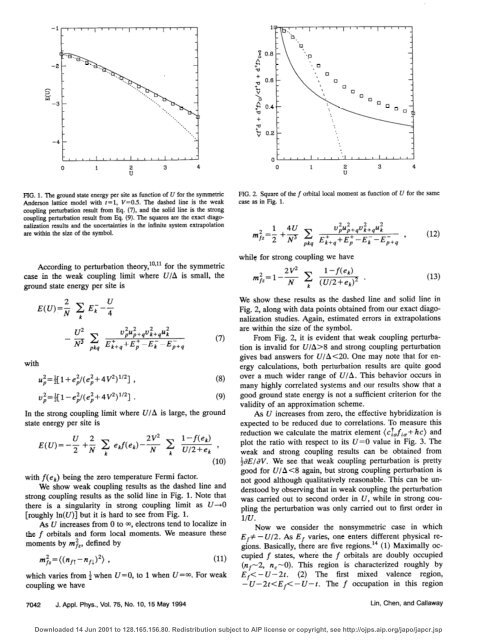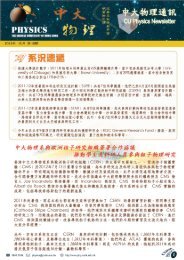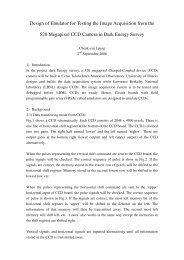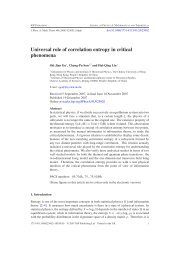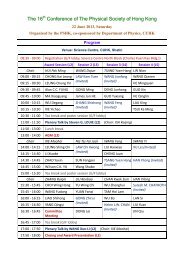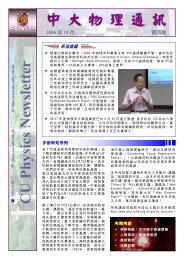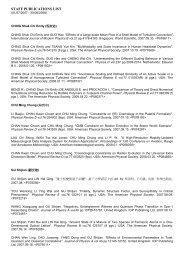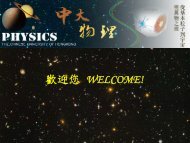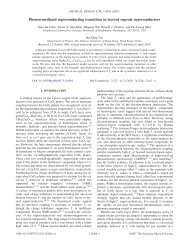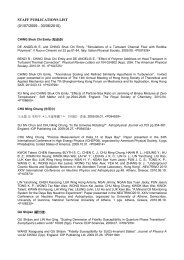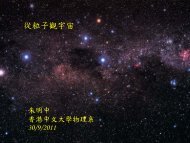Magnetic properties of the lattice Anderson model - Department of ...
Magnetic properties of the lattice Anderson model - Department of ...
Magnetic properties of the lattice Anderson model - Department of ...
You also want an ePaper? Increase the reach of your titles
YUMPU automatically turns print PDFs into web optimized ePapers that Google loves.
FIG. 1. The ground state energy per site as function <strong>of</strong> U for <strong>the</strong> symmetric FIG. 2. Square <strong>of</strong> <strong>the</strong> f orbital local moment as function <strong>of</strong> U for <strong>the</strong> same<br />
<strong>Anderson</strong> <strong>lattice</strong> <strong>model</strong> with r=l, V=OS. The dashed line is <strong>the</strong> weak case as in Fig. 1.<br />
coupling perturbation result from Eq. (7), and <strong>the</strong> solid line is <strong>the</strong> strong<br />
coupling perturbation result from Eq. (9). The squares are <strong>the</strong> exact diagonalixation<br />
results and <strong>the</strong> uncertainties in <strong>the</strong> infinite system extrapolation<br />
are within <strong>the</strong> size <strong>of</strong> <strong>the</strong> symbol. 2-1<br />
mfz-2<br />
4u<br />
+JqT (12)<br />
According to perturbation <strong>the</strong>ory,““’ for <strong>the</strong> symmetric<br />
case in <strong>the</strong> weak coupling limit where U/A is small, <strong>the</strong><br />
ground state energy per site is<br />
with<br />
E(U)=; 2 E;-;<br />
k<br />
-N3<br />
U2<br />
ui=$l+ei/(ei+4V2)1’2] ,<br />
vi=gl-ei/(ei+4V2)“2] .<br />
In <strong>the</strong> strong coupling limit where U/A is large, <strong>the</strong> ground<br />
state energy per site is<br />
E(U)=-; +; c e&e,,-? T ;;;:;j 7<br />
k<br />
(10)<br />
with f(ek) being <strong>the</strong> zero temperature Fermi factor.<br />
We show weak coupling results as <strong>the</strong> dashed line and<br />
strong coupling results as <strong>the</strong> solid line in Fig. 1. Note that<br />
<strong>the</strong>re is a singularity in strong coupling limit as ZJ+O<br />
[roughly In(U)] but it is hard to see from Fig. 1.<br />
As U increases from 0 to ~0, electrons tend to localize in<br />
<strong>the</strong> f orbitals and form local moments. We measure <strong>the</strong>se<br />
moments by m& defined by<br />
4z=((nfT-nf1)2) , (11)<br />
which varies from 1 when U =O, to 1 when U=m.<br />
coupling we have<br />
(7)<br />
(8)<br />
(9)<br />
For weak<br />
while for strong coupling we have<br />
l-f(ek)<br />
m +-q c<br />
k (U/2+ek)’ *<br />
(13)<br />
We show <strong>the</strong>se results as <strong>the</strong> dashed line and solid line in<br />
Fig. 2, along with data points obtained from our exact diagonalization<br />
studies. Again, estimated errors in extrapolations<br />
are within <strong>the</strong> size <strong>of</strong> <strong>the</strong> symbol.<br />
From Fig. 2, it is evident that weak coupling perturbation<br />
is invalid for U/A>8 and strong coupling perturbation<br />
gives bad answers for U/A


